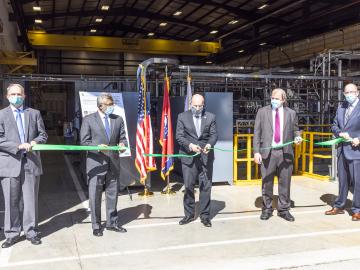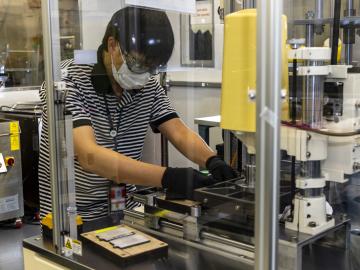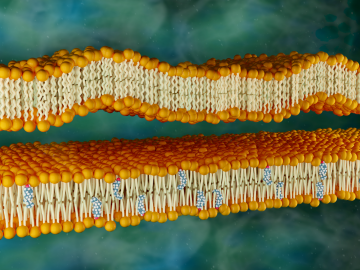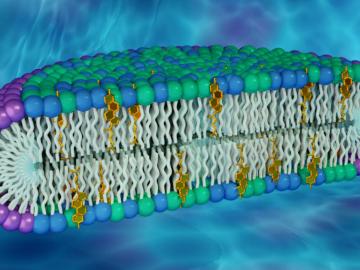
Filter News
Area of Research
- Advanced Manufacturing (1)
- Biology and Environment (4)
- Energy Science (12)
- Fusion and Fission (3)
- Fusion Energy (1)
- Isotopes (2)
- Materials (15)
- Materials for Computing (1)
- National Security (2)
- Neutron Science (17)
- Nuclear Science and Technology (6)
- Quantum information Science (2)
- Supercomputing (22)
News Type
News Topics
- (-) Biomedical (24)
- (-) Computer Science (56)
- (-) Energy Storage (15)
- (-) Exascale Computing (26)
- (-) Frontier (20)
- (-) Fusion (20)
- (-) Microscopy (10)
- (-) Nanotechnology (8)
- (-) Neutron Science (34)
- (-) Polymers (6)
- (-) Summit (19)
- 3-D Printing/Advanced Manufacturing (33)
- Advanced Reactors (8)
- Artificial Intelligence (36)
- Big Data (28)
- Bioenergy (19)
- Biology (19)
- Biotechnology (8)
- Buildings (18)
- Chemical Sciences (18)
- Clean Water (4)
- Composites (8)
- Coronavirus (13)
- Critical Materials (4)
- Cybersecurity (4)
- Education (2)
- Emergency (2)
- Environment (32)
- Fossil Energy (3)
- Grid (17)
- High-Performance Computing (36)
- Hydropower (1)
- Isotopes (18)
- ITER (1)
- Machine Learning (19)
- Materials (16)
- Materials Science (36)
- Mathematics (7)
- Mercury (1)
- Microelectronics (1)
- Molten Salt (1)
- National Security (30)
- Nuclear Energy (33)
- Partnerships (24)
- Physics (21)
- Quantum Computing (16)
- Quantum Science (27)
- Security (12)
- Simulation (18)
- Space Exploration (5)
- Statistics (2)
- Transportation (13)
Media Contacts

NellOne Therapeutics has licensed a drug delivery system from the Department of Energy’s Oak Ridge National Laboratory that is designed to transport therapeutics directly to cells infected by SARS-CoV-2, the virus causing COVID-19.

When Sandra Davern looks to the future, she sees individualized isotopes sent into the body with a specific target: cancer cells.

There are more than 17 million veterans in the United States, and approximately half rely on the Department of Veterans Affairs for their healthcare.

Popular wisdom holds tall, fast-growing trees are best for biomass, but new research by two U.S. Department of Energy national laboratories reveals that is only part of the equation.

Department of Energy Under Secretary for Science Paul Dabbar joined Oak Ridge National Laboratory leaders for a ribbon-cutting ceremony to mark progress toward a next-generation fusion materials project.

Soteria Battery Innovation Group has exclusively licensed and optioned a technology developed by Oak Ridge National Laboratory designed to eliminate thermal runaway in lithium ion batteries due to mechanical damage.

Neutron scattering at ORNL has shown that cholesterol stiffens simple lipid membranes, a finding that may help us better understand the functioning of human cells.

A team of researchers led by Vanderbilt University has recently shed light on how membrane proteins could be influenced by the lipids around them. By developing a novel type of membrane model, the scientists were able to show that the shape and behavior of a protein can be altered by exposure to different lipid compositions.

Scientists at ORNL and the University of Nebraska have developed an easier way to generate electrons for nanoscale imaging and sensing, providing a useful new tool for material science, bioimaging and fundamental quantum research.

The Department of Energy announced awards for 10 projects with private industry that will allow for collaboration with DOE national laboratories in accelerating fusion energy development.


